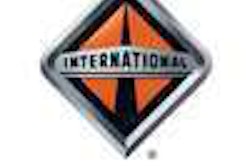Most Pennsylvania Turnpike tolls increased 25 percent as of 12:01 a.m. ET Sunday, Jan. 4. With the new tolls, the most-common cash rate for commercial vehicles increased from $6.25 to $7.85, while the most-common cash rate for passenger vehicles increased from 75 cents to 95 cents. A complete toll schedule is available at www.paturnpike.com.
Tolls were increased across the entire system with two exceptions: Tolls on the newest sections (Findlay Connector/PA-576 and Mon-Fayette Expressway/Turnpike 43 Uniontown to Brownsville section) will remain at their current rates that were set in anticipation of the increase.
The increase was required to enable the Turnpike to meet financial obligations under Act 44, passed by the General Assembly and signed by Gov. Ed Rendell in July 2007. With Act 44, the Turnpike is providing $2.5 billion in supplemental transportation funding from August 2007 to May 2010. New toll revenue from the increase will be used mostly by PennDOT for off-Turnpike investment.
“Our customers need to know that tollbooth income is being reinvested in the commonwealth’s transportation systems and economy,” says Joe Brimmeier, chief executive officer of the Pennsylvania Turnpike Commission. “For the first time, tolls aren’t only going back into state toll roads, but helping fund infrastructure improvements in every Pennsylvania county. In fact, more than 90 percent of the toll-increase proceeds will benefit non-Turnpike road and bridge projects and transit operations.”
As a result of the toll increase, projected annual gross toll revenue will increase from $619.2 million (2008 fiscal year end) to about $738.4 million (projected 2010 fiscal year end). The previous Turnpike toll increase occurred in August 2004.
The Turnpike also is taking a new approach future toll increases; starting in January 2010, tolls will go up incrementally about three percent each year. “Compared to levying a large increase every dozen years or so, regularly scheduled increases allow travelers to better anticipate rate changes,” Brimmeier says. “Since half of our revenues are collected with E-ZPass, it’s simpler to implement annual rate changes today.”









